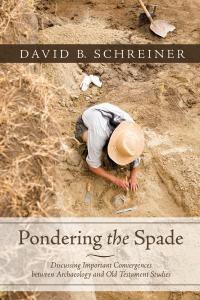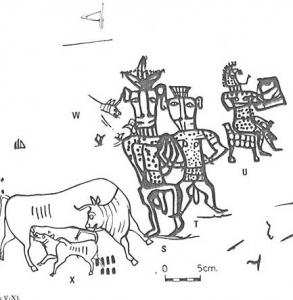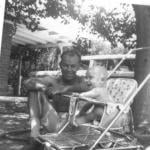
Today we have a guest blogger from my good friend David Schreiner. Dave has just released a new book entitled, Pondering the Spade: Discussing Important Convergences between Archaeology and Old Testament Studies. I highly recommend picking it up. As a bonus, if you read the recommendations on the back page you might see a familiar name.
What inspired or challenged you to write this book?
I wrote this book largely because of an annoyance that I have been experiencing when developing my Old Testament classes. If one takes seriously the notion that God’s revelation largely (but not absolutely) came through a particular culture living in a particular region and time—Israel (and I do take this seriously)—then it stands to reason that the discipline best suited to comment on that culture (Archaeology) needs to be utilized effectively. However, archaeology is a discipline separate from Biblical Studies. Its concerns are anthropological and historical, not theological or apologetic. This means that we can’t just assume that Archaeology is a sub-discipline within Biblical Studies—as if it serves Biblical Studies. Applying archaeological conclusions to issues of Biblical Studies requires critical thought, nuance, creativity (in some cases). It’s my conviction that such an understanding about Archaeology’s relationship to Biblical Studies is lacking among many in the Church, and even by a significant number of educators in centers of Christian higher education.
And this is another reason why I wrote the book. It was my experience that the necessary discussions got too technical too quickly. I wanted something that was accessible, not to mention to put several important examples in one location. For example, to discuss Israelite religion you would have to one place for Kuntillet Ajrud and then over to another for Mt. Ebal. Or, to discuss the process of literary development, the Gilgamesh Epic was discussed in Book A but Qumran in Book B. So, again, it was kind of annoying.

How is the book laid out?
As for the framework to present all this, I used William Dever’s idea of convergence. I’ve always appreciated his methodological discussions. He’s never been shy to call people out for inappropriately applying the results of Archaeology. And I came across this idea of convergence, which is really nothing novel. Yet for whatever reason the idea that, under the right conditions, the results of Archaeology and Biblical Studies converge, and thus inform each other, struck a chord with me. So, I chose to use this concept, but to develop it. I came up with this idea of broad and narrow convergences.
Narrow convergences are instances where Archaeology directly informs a particular passage or issue in the Bible. For example, Sennacherib’s annals speak to 2 Kings 18–19. Mount Ebal speaks to Joshua 8:30–35 and Deuteronomy.
Broad convergences are the instances where Archaeology informs macro-level issues, such as social institutions or elements of the ancient Near Eastern culture. For instance, the textual archives of Mari help us understand dimorphic societies (occurring in two distinct forms) and the prophetic institution. The Gilgamesh Epic gives us insight into large scale literary production. And of course, there’s Ugarit that sheds light on the waning years of the Late Bronze Age and the Canaanite pantheon.
Who is your intended audience?
Anyone who is interested in issues of Old Testament history, culture, and deeper theological issues will hopefully gain some insight. Moreover, seminary students and college students majoring in the religion of Israel or Bible will have a nice resource that puts several discussions in one location at the same discussing issues critical to a deep understanding of Scripture and Ancient Israel.












